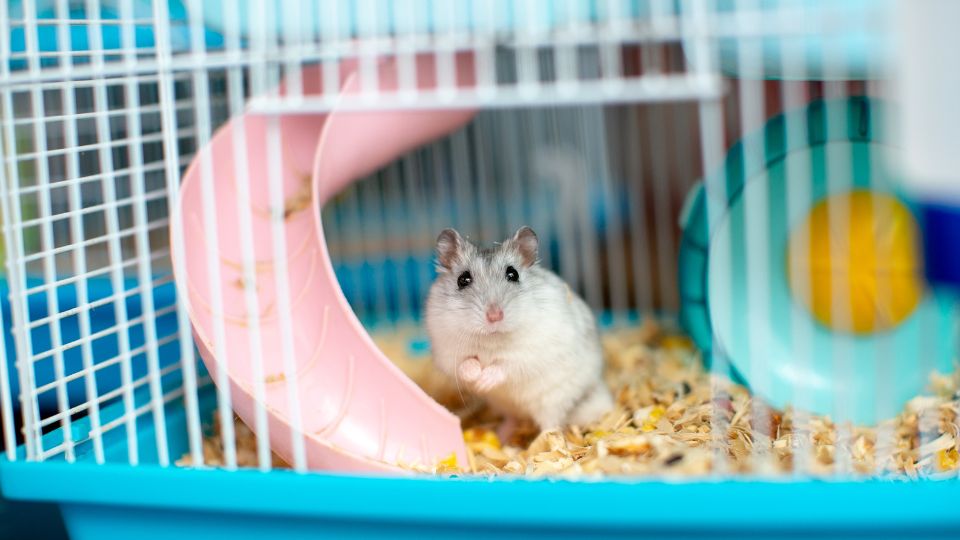Indicators of change in the small pet market

Although cats and dogs remain the most popular choices of pet, increasing awareness of the appeal of alternative companions is beginning to speed up product innovation.
The small pet, rodent and bird market has historically ranked bottom in terms of popularity.
With fewer households owning these types of pets, sales figures and their financial impact have been less significant in retail. But since the pandemic, ‘other pets’ have been winning over consumers.
A more affordable option
The most recent relevant study by Packaged Facts predicted that the sector would reach $3.6 billion (€2.8B) in sales in the US by 2023, representing a growth of about 4% compared to 2022, and continuing an upward trend since 2020.
Smaller pets are more affordable to maintain compared with dogs and cats, which is particularly appealing during challenging economic times.
Just over half (51%) of small pet owners in the US said the cost of setting up habitats and tanks for their pets is reasonable, with only 22% disagreeing. This indicates that marketers should focus on promoting the affordability of these pets by highlighting the lower costs involved in their care.
Companions for small spaces
The ‘pets as family’ attitude is on the rise in this segment too, with 69% of the owners of small pets now seeing them as part of the family.
Although this sentiment is less common than with dog owners (97%) and cat owners (95%), it presents an opportunity for marketers and retailers to further engage small pet parents by emphasizing the important role these companions can play in their daily lives.
In Europe, although the pace of growth has slowed post-pandemic, small pets are still very popular.
It is younger pet parents, especially those living in smaller spaces, who are driving demand for high-quality products that align with broader health and natural ingredient trends.
Mimicking natural diets
Much like the cat and dog sectors, this segment is also undergoing a significant process of premiumization.
One of the main demands from pet owners is for more natural and healthier food options, reflecting the growing desire to provide pets with high-quality nutrition that aligns with their health and well-being.
Pet players operating in the category say that this trend is strongly connected to the new profile of small pet owners, particularly Gen Z and millennials, who are committed to learning as much as possible to ensure the well-being and longevity of their pets.
Following this trend, UK-based small pet food firm Supreme Pet Foods recently launched a dedicated line for rabbits and guinea pigs aimed at replicating the foods these animals would naturally consume in the wild.
The goal is to encourage natural behaviors and satisfy their instincts to forage.
“The trend for natural, healthy nutrition shows no signs of slowing. Pet parents are looking for products that are free from artificial flavors or colors and rich in natural ingredients. And that’s great news for small pet health and well-being,” says Claire Hamblion, the company’s Marketing Director.
Engagement and play
In addition to nutrition, the small pet market is increasingly focused on creating alternatives that encourage more physical activity and fun for these smaller animals.
The traditional idea of keeping hamsters and guinea pigs, for instance, confined in cages is rapidly changing. Pet owners now seek to connect more deeply with their pets, engaging in play and other interactive activities.
Ethan Haber, a hamster lover, had long been frustrated by what he saw as a lack of innovation in the small pet market.
While walking through New York’s parks, he often saw hundreds of dogs and cats enjoying the outdoors with their owners and wondered: “Why can’t I do the same with my hamster?”
The first idea came to him in 2019, but it was during the pandemic that he developed a prototype for a small pet exercise ball and unique carrier, which launched 2 years later under the brand name Halo.
“There hasn’t been any innovation in the small pet space for about 40 years. So, our ball is an upgrade. It’s a great value proposition, allowing pet owners to take the animal out of their cage,” he explains.
The product has a production run of over 5,000 units and Haber’s company, Happy Habitats, has recently received an order from Canadian retailer Pet Valu.
Keeping it simple
Happy Habitats sells other products for small pets too, including an all-natural treat formula containing only 2 ingredients – with oats as the base and no preservatives – which won an award for best small pet treat at SUPERZOO.
“When you look at pet store shelves, you see a bag of treats with 12 ingredients. It shouldn’t be that complicated for a carrot-flavored treat – it should just be carrots,” he says.
In-store guidance
The pet specialty channel dominated the US small pet product market in 2022, accounting for 60% of total sales.
According to Packaged Facts, online sales only represented around 20%, partly due to the logistical challenges of shipping larger habitats and enclosures. And industry players expect offline shopping for this category to remain the most popular, with owners given the opportunity to discover the full product range in-store.
Jason Savitt, President of Prevue Pet Products, a Chicago-based manufacturer of pet supplies, explains: “In this niche market, customers need to be educated and guided. That’s why offline sales have an advantage over online shopping. They need to understand, for instance, why their small pets require a larger space, and the health and quality-of-life benefits it provides. This is something online shopping still struggles to deliver.”
Where to go from here
The industry believes that the small pet category has a promising future, with brands launching products that cater to owners’ new desires.
As Hamblion says: “We’re seeing more new healthy, natural products as the demand for premium items continues to grow.“
On the other hand, Haber believes there is still a lack of innovation in small pet products. Happy Habitats plans to launch other sizes of its exercise ball and expand into new product lines, including toys, accessories and equipment.
“There’s little competition in the small pet space, so the opportunity to innovate is huge if you can seize it – and that’s what we’re aiming to do.“
Priorities for future innovation
While there is still a gap in the market, some players believe it is beginning to narrow – as more specialized products are being developed.
Savitt says that Prevue does see new opportunities. He explains that there is a growing trend of owners providing their small pets with more living and playing space, as long as the design is attractive.
“These species have become more popular in recent years, and creating an environment that’s suited to their habits and safety has been a focus for us,” he adds.
This trend has driven companies like his to develop habitats that cater to the unique needs of specific pets. For instance, Prevue has introduced enclosures with tighter wire spacing to ensure safety.
When it comes to innovation for small pets, Savitt identifies 3 key priorities for the market: offering smaller bar spacing; providing larger habitats for more playing space; and ensuring that the enclosures are designed to complement home decor.
